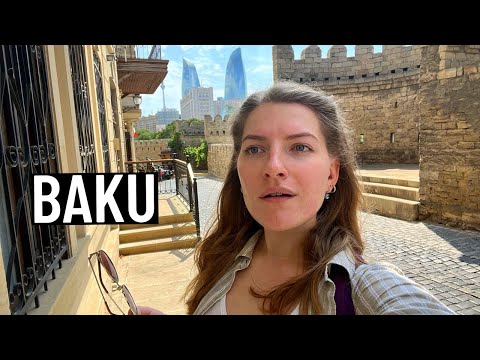
Baku, the capital city of Azerbaijan, is often portrayed as a modern metropolis with dazzling architecture and an ever-growing skyline. Famous for its Flame Towers and the Crystal Hall, Baku presents itself as a blend of Parisian style and Dubai-like modernism on the Caspian Sea. But beyond this glossy exterior, there are layers to the city and its culture that often remain unexplored in mainstream media. This article delves deeper into what is commonly shown and what lies beneath the stunning façade of Baku.
#### The Publicized Image
Baku has undergone significant transformation over the past few decades, much of it fueled by Azerbaijan’s oil wealth. The city boasts impressive architectural feats such as the Heydar Aliyev Center designed by Zaha Hadid, which symbolizes modernity and progress. The government has invested heavily in infrastructure, aiming to craft an image of a welcoming hub for international business and tourism.
Events like the Eurovision Song Contest in 2012 and the European Games in 2015 have served to put Baku on the map as an emerging cultural capital in Eurasia. Moreover, its strategic geographic location serves as a bridge between East and West, adding to its allure as a cosmopolitan nexus.
#### Behind the Glossy Facade
However, there is more to Baku than its polished surface might suggest. Critics argue that beneath its architectural marvels lie issues that are seldom discussed openly due to government control over local media.
1. **Economic Disparities**: Despite substantial national wealth from oil revenues, economic benefits are not evenly distributed among Baku’s population. There is noticeable income inequality in the city with conspicuous wealth contrasted by underprivileged areas that rarely make it into promotional materials or tourist itineraries.
2. **Human Rights Concerns**: Azerbaijan has faced criticism from international human rights organizations regarding freedom of speech and political expression. Journalists and activists who challenge governmental policies or corruption often find themselves under pressure or at risk of imprisonment.
3. **Cultural Overlays**: While much attention is given to Baku’s European-looking façades and modern developments, less is said about traditional Azerbaijani culture which seems overshadowed at times. Authentic Azerbaijani neighborhoods with their unique charm, tea houses (‘chaykhanas’), traditional music (‘mugham’), and local crafts are lesser-known aspects that offer a deeper understanding of the country’s rich heritage.
4. **Environmental Issues**: The rapid urbanization and industrial growth have raised environmental concerns including pollution levels in parts of Baku where oil extraction and processing industries prevail.
#### Unseen Corners
Beyond these broader social issues lie stories from everyday life in Baku that portray a vibrant city teeming with contrasts:
– In quarters such as Icherisheher (Old City), life moves at a different pace amid historical buildings that date back centuries.
– Suburban areas like Binagadi have their own rhythm dominated by local markets buzzing with activity unlike downtown’s serene boulevards.
– Local cuisine offers sumptuous dishes such as plov (rice pilaf) or kebabs that highlight diverse cultural influences converging in Azerbaijani culinary traditions.
### Conclusion
While Baku can certainly dazzle visitors with its spectacular architecture and tales of opulence fueled by oil riches, it should not be mistaken solely for these attributes. A closer look reveals complex socio-economic dynamics and cultural depth largely unseen by those who do not venture beyond curated tourist experiences or media portrayals constrained by political interests.
To truly understand Baku—and indeed any major global city—it is necessary to explore both its celebrated features and those aspects they never show you: from grassroots community life to ongoing struggles for rights and recognition within society.
